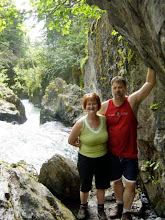
Application Week 5 ~ Social Learning Theories in Practice
Instructor: Kathryn Arnold
EDUC-6711I-1 Bridging Learning Theory, Instruction, and Technology
“Open your book to page 357 and read to page 450. When you are done answer the questions at the end of the chapter. Remember no talking and you may not help each other." Isn’t that a wonderful way to motivate students these days? I’m sure most of you are shaking your head and do not agree with that type of educating. Unfortunately, there are still educators that believe that this is the best way to teach children.
This week we learned about a wonderful theory that will engage and motivate students to be successful. Social learning theory is when students are engaged in creating an artifact while having discussions on what they are doing with others (Laureate 2008). This makes the curriculum engaging, motivating and collaborative. What a fantastic way to get kids excited about school!
Vygotsky and his Zone of Proximal Development (ZPD) states that there are 3 levels students are at during their development. What the child already knows, what the child is about to learn, and what the child is unable to learn (Laureate, 2008). During the stage: What the child is about to learn: it is crucial that the child has help from a teacher, peers or a computer to make successful connections to the information. Incorporating a cooperative learning strategy into the learning environment would help enhance the process.
When developing cooperative groups make sure they are of a manageable size and use a variety of criteria to the groups (Pitler, Hubbell, Kuhn, Malenoski, 2007). I typically change out my groups depending on the final outcome desired. There are times that I allow my students to pick who they want to work with. This gives my students a voice in their learning environment. At the beginning of the year we discuss the different roles each member of the group will be responsible for. The roles can vary but normally I have a timekeeper, facilitator, record keeper, reporter, and mediator. By having roles for the kids it seems to help elevate the groups.
There are a variety of different web resources that allow students to engage in cooperative learning with students around the world. I would really like to incorporate ePals (www.epals.com) into my class next year. I have a diverse group of students and it would be exciting to participate in a cross-culture exchange (Pitler, Hubbell, Kuhn, Malenoski, 2007).
I learned about webquests last year and I really enjoy them. My students explored a few webquest and I plan on creating more to spice up our “ho-hum” curriculum. The quests are challenging and motivating for all my students. I enjoy listening to the different conversations my students have during and after the quests.
Students are no longer engaged by reading outdated textbooks. Drills and practice do not motivate students. Students don’t have to regurgitate answers for a test. 21st century learners need to be engaged with innovative lesson and cooperating with their peers on a project. The learning environment has changed. At times it may be loud, messy and disorganized. Stop and take a closer look at the 21st century learning experience and you will see students excited, engaged, cooperating, and connected.
Reference
Laureate Education, Inc. (Producer). (2008). Program eight. Social Learning Theories [Motion picture]. Bridging learning theory, instruction and technology. Baltimore: Author
Pitler, H., Hubbell, E., Kuhn, M., & Malenoski, K. (2007). Using technology with classroom instruction that works. Alexandria, VA: ASCD.



